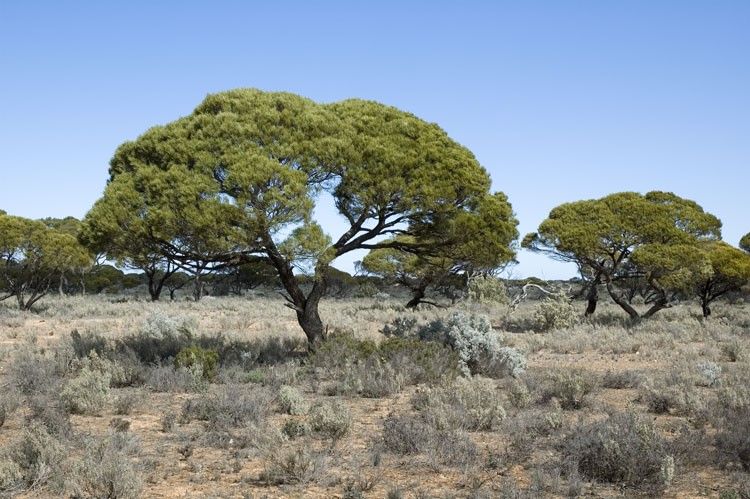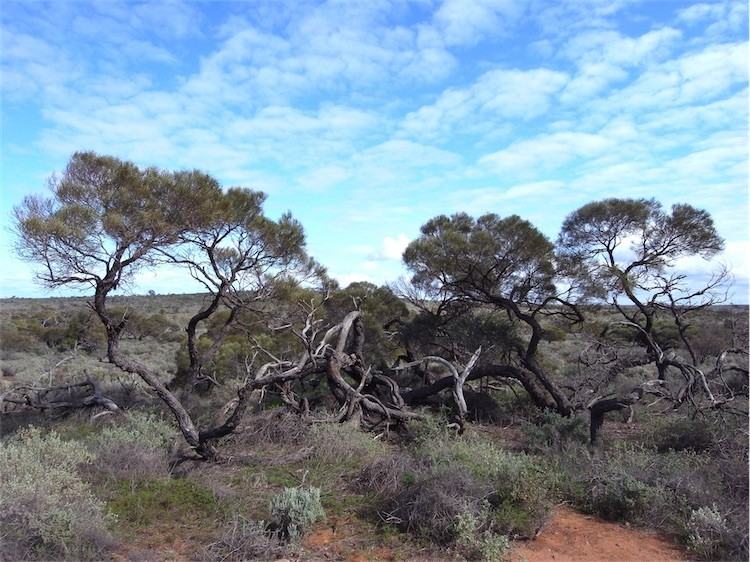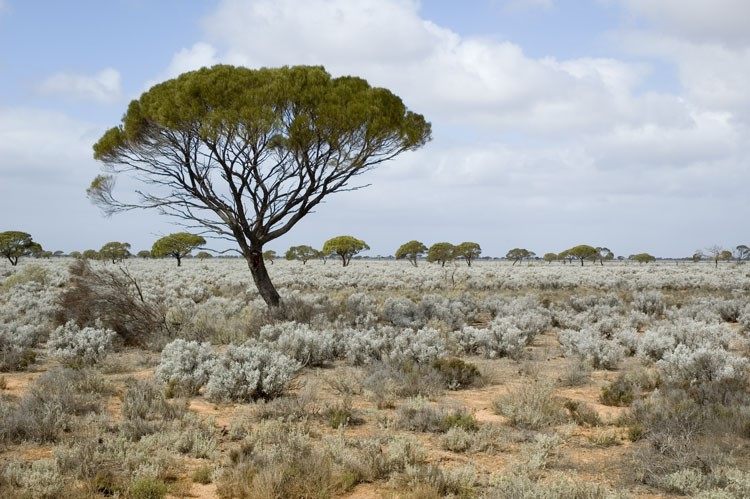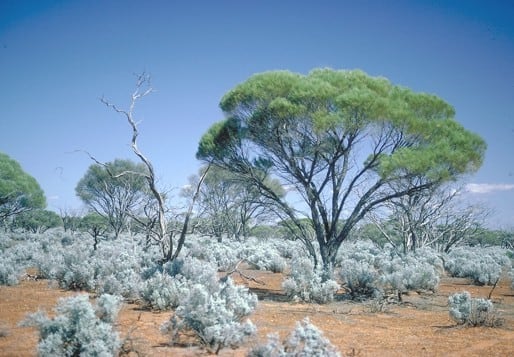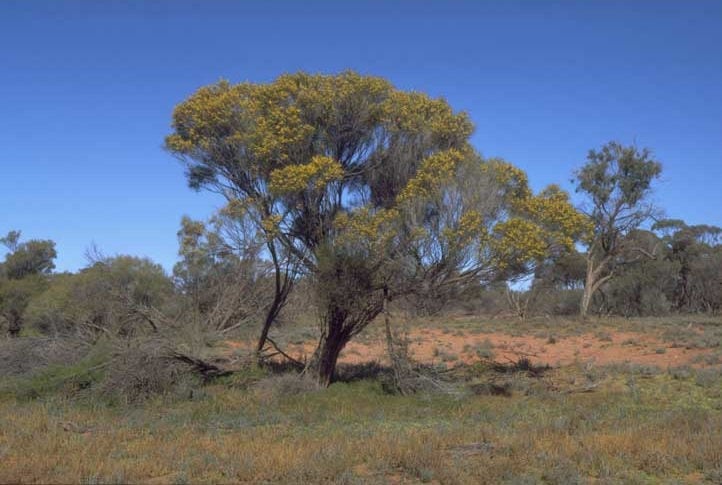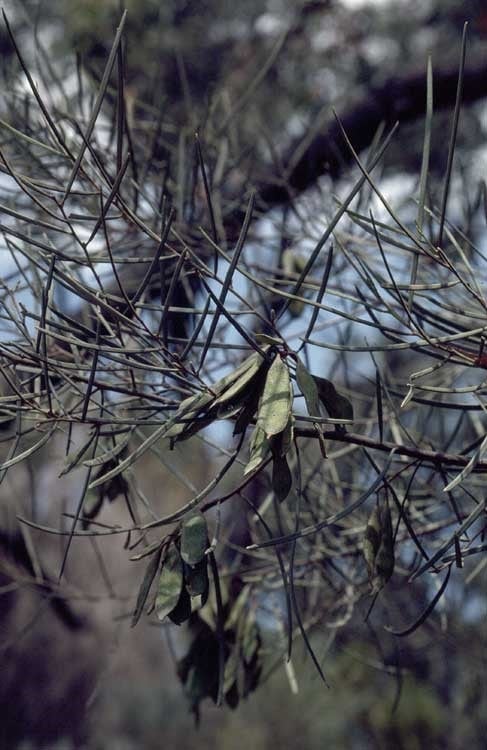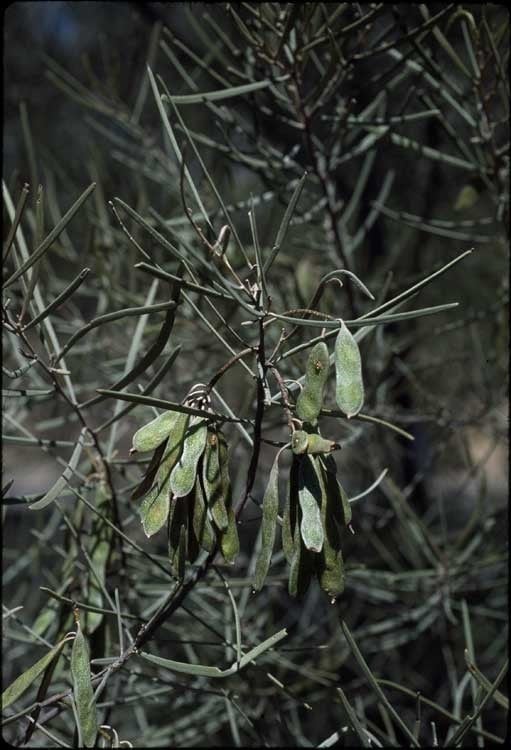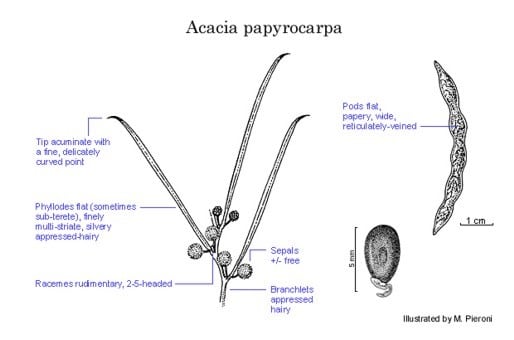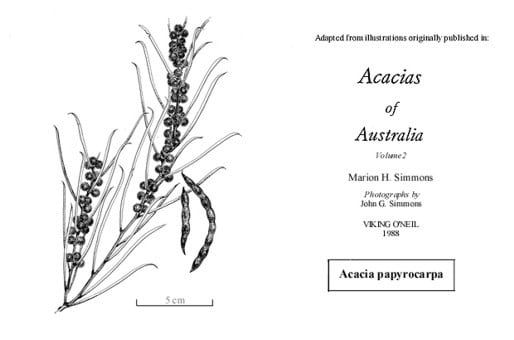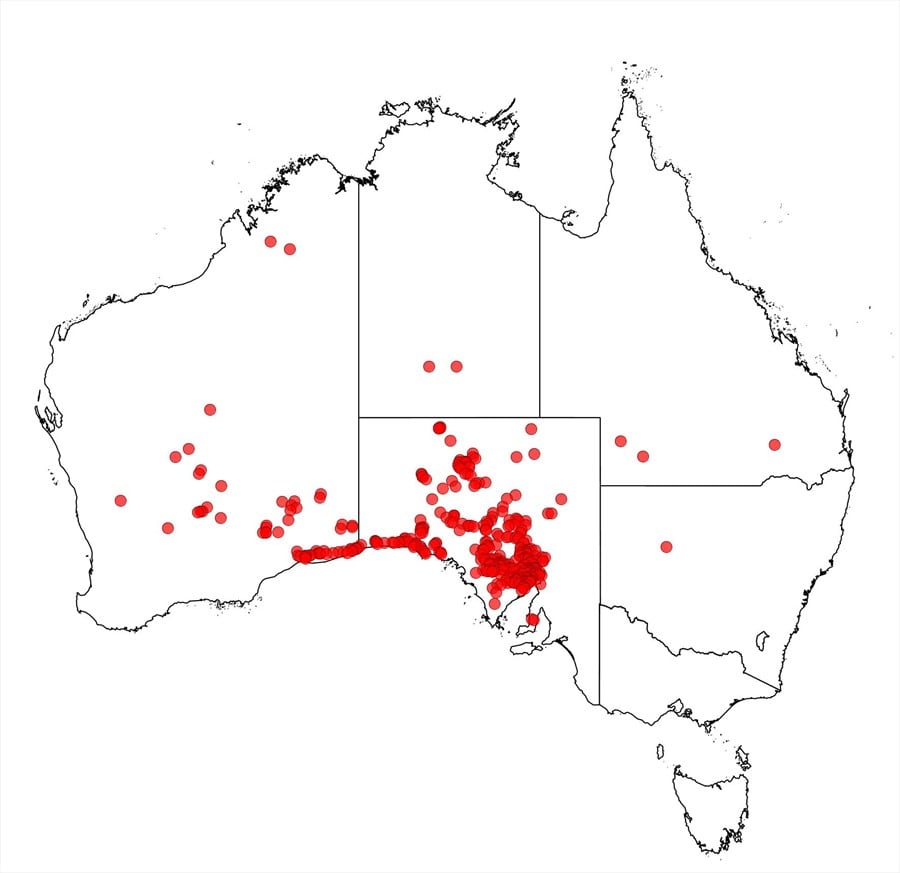Acacia papyrocarpa Benth.
WATTLE
Acacias of Australia
Common Name
Western Myall
Family
Fabaceae
Distribution
Scattered in southern inland W.A. from near Kalgoorlie across the Nullarbor into S.A. as far as Mt Irwin Stn and South Flinders Ra. A flowering specimen from near Cooper Ck, Qld, is distributionally anomalous and may in fact not even represent this species.
Description
Tall shrub or small tree 3–8 m high; crown dense, neat, rounded, spreading. Bark fissured, grey. Branchlets occasionally pendulous, appressed-puberulous, glabrescent. Phyllodes linear, subterete to flat, 4–12 cm long, 1–3 mm wide, acuminate with a fine delicately curved innocuous point, not rigid, silvery appressed-puberulous, often glabrescent; multistriate with numerous, closely parallel, indistinct nerves. Inflorescences rudimentary 2–5-headed racemes with axes c. 1 mm long or simple in axillary clusters; peduncles 2–7 mm long, silvery appressed-puberulous; heads globular, 3–4 mm diam., 20–25-flowered, golden; bracteoles oblanceolate, ciliate. Flowers 5-merous; sepals free to 1/3-united; petals glabrous. Pods narrowly oblong, flat, slightly raised over and constricted between seeds, to 11 cm long, 4–10 mm wide, chartaceous, reticulate, glabrous. Seeds longitudinal, broadly elliptic to ovate, 4.5–5 mm long, subnitid, dark brown; aril small.
Habitat
Grows in sandy loam, clay and calcareous soil, in low open woodland and shrubland, often with chenopods.
Specimens
W.A.: Mt Gibson Stn (between Wubin and Paynes Find), B.R.Maslin 4223 (PERTH); Great Victoria Desert, just S of Plumridge Lakes, B.R.Maslin 5712 (BRI, PERTH). S.A.: c. 27 km W of Port Augusta on Hwy 1, B.Copley 3165 (NSW, PERTH); c. 15 km W of Nullarbor HS, D.J.E.Whibley 4504 (PERTH). Qld: near Boongeena Ck, 10 km E of Cooper Creek, R.Bennett, 28 Aug. 1984 (BRI, PERTH).
Notes
Aspects of the biology of A. papyrocarpa are summarised in D.J.E.Whibley & D.E.Symon, Acacias S. Australia 2nd edn, 220–221 (1992).
Difficult to distinguish from A. loderi which has narrower, non-reticulate submoniliform pods; it also tends to have narrower phyllodes and less hairy bracteoles. Intermediates between the two species are reported by D.J.E.Whibley & D.E.Symon, Acacias S. Australia 2nd edn, 218 (1992). Also related to A. sibilans and more distantly to A. fraternalis.
An entity related to A. papyrocarpa characterized by coarsely pungent phyllodes and represented by a number of collections, including M.Koch 274, is discussed under Acacia sp. Blyth Range (W.V.Fitzgerald s.n. 1898); this entity is discussed by R.S.Cowan & B.R.Maslin, Fl. Australia 11B: 108 (2001) under A. papyrocarpa. In the area N of Port Augusta, S.A., a pendulous form, locally called Water Myall, occurs sympatrically with typical A. papyrocarpa.
FOA Reference
Data derived from Flora of Australia Volumes 11A (2001), 11B (2001) and 12 (1998), products of ABRS, ©Commonwealth of Australia
Author
R.S.Cowan, B.R.Maslin
This identification key and fact sheets are available as a mobile application:
URL: https://apps.lucidcentral.org/wattle/
© Copyright 2018. All rights reserved.
